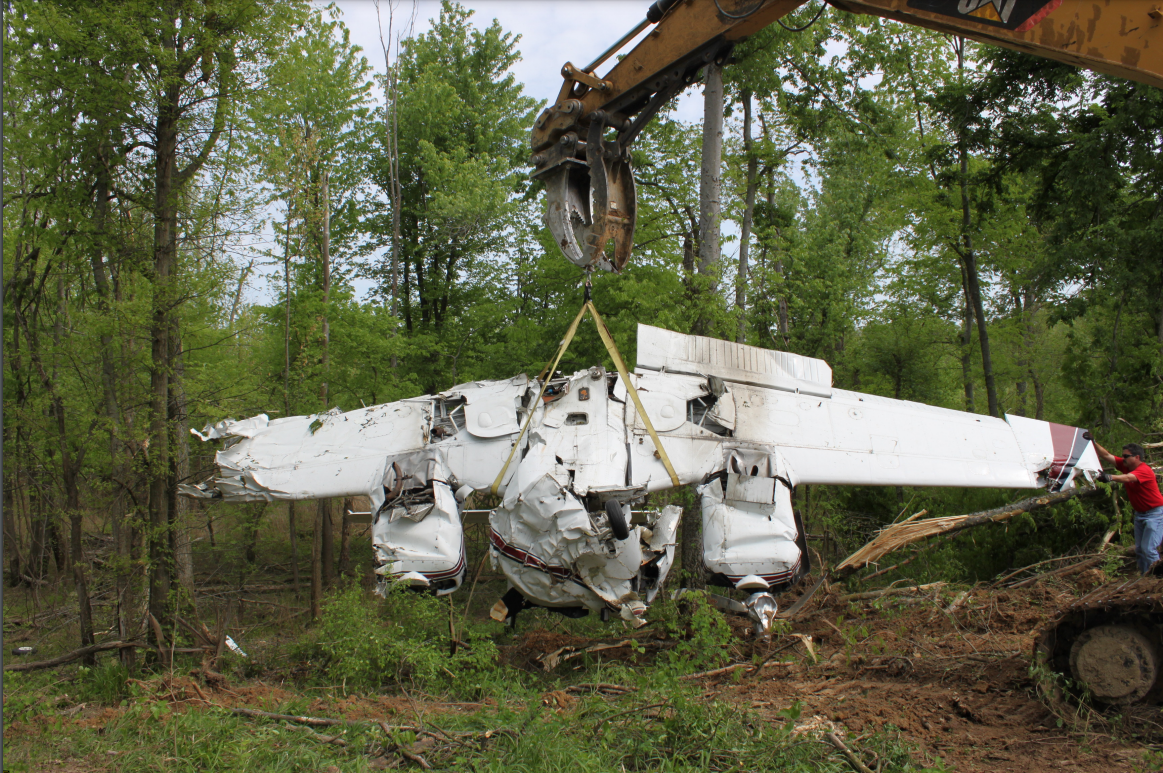
ASN Wikibase Occurrence # 144753
This information is added by users of ASN. Neither ASN nor the Flight Safety Foundation are responsible for the completeness or correctness of this information.
If you feel this information is incomplete or incorrect, you can submit corrected information.
| Date: | Sunday 1 April 2012 |
| Time: | 16:00 |
| Type: |  Beechcraft 58 Baron |
| Owner/operator: | Private |
| Registration: | N9448Q |
| MSN: | TH-204 |
| Year of manufacture: | 1972 |
| Total airframe hrs: | 5542 hours |
| Engine model: | Continental IO 520 SERIES |
| Fatalities: | Fatalities: 1 / Occupants: 1 |
| Aircraft damage: | Substantial |
| Category: | Accident |
| Location: | near Woosley Field Airport (96KY), Calhoun, KY -
 United States of America United States of America
|
| Phase: | Initial climb |
| Nature: | Private |
| Departure airport: | Woosley Field Airport, KY (96KY) |
| Madisonville Regional Airport, KY (2I0) | |
| Investigating agency: | NTSB |
| Confidence Rating: |
The pilot was departing his home airport to fly to another airport to refuel the airplane. Witnesses reported that the airplane lifted off from the 1,800-foot-long grass runway; however, none of the witnesses observed the airplane crash shortly after takeoff. The airplane rolled left and impacted the ground inverted in a wooded area near the departure end of the runway; there was no postcrash fire.
Examination of the flight controls revealed no evidence of preimpact failure or malfunction. Damage to one of the right engine propeller blades was consistent with engine power at impact, whereas the left engine propeller blades showed no evidence of power at impact. Thus it is likely that the left engine experienced a total loss of power just after takeoff, which the pilot was unable to control. Both engines were removed, transported to the manufacturer’s facility, and test run with no mechanical discrepancies noted.
Rust-colored water was detected in various fuel system components from both engines. Further, the strainer drain lines and outer tank drains in both engines’ fuel systems were partially blocked by rust-colored debris. Postaccident examination revealed evidence of long-term water contamination of both engines’ fuel systems due to leakage past the fuel caps, which are normally replaced on an “on-condition” basis during maintenance. The engine failure was likely due to the water contamination in the fuel system, which was not detected by the pilot during the preflight inspection.
Further, the leaking fuel caps most likely existed, but went undetected, when the airplane’s most recent annual inspection was performed about 4 months earlier. A review of airplane maintenance records revealed that the only entry related to the fuel filler caps since the airplane was manufactured in 1972 was dated July 2010, at which time the left fuel filler cap was replaced and an outer o-ring of the incorrect dimension was installed. In April 2011, as a result of a 2008 investigation of a Canadian registered Beech 58 airplane that had water enter the fuel tank due to deteriorated fuel filler cap o-rings, the manufacturer revised the maintenance manual of Beech 55 and 58-series airplanes to require fuel cap overhaul. Maintenance manual guidance in effect when the accident airplane’s most recent annual inspection was performed excluded the accident airplane (by serial number) from this overhaul. Since this accident, the manufacturer has revised its Beech 55 and 58 maintenance manuals to include the fuel cap overhaul requirement for all potentially affected airplanes, including the accident airplane.
Probable Cause: The failure of the pilot to maintain airplane control after experiencing a loss of power from the left engine due to water contamination of the fuel system. Contributing to the accident was the pilot’s inadequate preflight inspection of the airplane and maintenance personnel’s inadequate annual inspection, because both failed to detect the long-term water contamination of the fuel system and the deteriorated outer o-rings on both fuel caps. Also contributing to the water contamination of the fuel system was the inaccurate information and instructions in the airplane maintenance manual pertaining to overhaul requirements of the fuel filler caps.
Accident investigation:
 |
|
Sources:
NTSB
Location
Images:



Photos(c): NTSB
Revision history:
| Date/time | Contributor | Updates |
|---|---|---|
| 02-Apr-2012 08:36 | gerard57 | Added |
| 02-Apr-2012 10:25 | Geno | Updated [Aircraft type, Registration, Cn, Location, Departure airport, Destination airport, Source] |
| 03-Apr-2012 10:58 | RobertMB | Updated [Time, Aircraft type, Location, Phase, Departure airport, Destination airport, Source, Narrative] |
| 24-Apr-2012 09:41 | Geno | Updated [Source] |
| 21-Dec-2016 19:28 | ASN Update Bot | Updated [Time, Damage, Category, Investigating agency] |
| 27-Nov-2017 20:37 | ASN Update Bot | Updated [Operator, Other fatalities, Departure airport, Destination airport, Source, Narrative] |
| 13-Mar-2022 04:29 | Captain Adam | Updated [Other fatalities, Location, Departure airport, Destination airport, Narrative, Photo] |
| 13-Mar-2022 04:29 | Captain Adam | Updated [Photo] |
| 13-Mar-2022 04:30 | Captain Adam | Updated [Photo] |
Corrections or additions? ... Edit this accident description
The Aviation Safety Network is an exclusive service provided by:


 ©2024 Flight Safety Foundation
©2024 Flight Safety Foundation